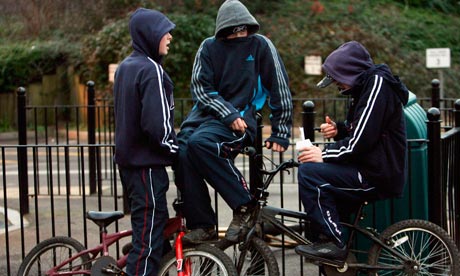The social groups that are presented are teenage school/college students and in particaularly teenage girls. The general representations of them in the media are of them being immature, impressionable, independent, mischievous and often quite sexualised.

We stayed away from that, trying to present them as vulnerable due to the presentation of her as a victim. One way we did this was by using a close-up low angle shot of Alice with the tracks beneath her to make it look anxious, tense and place the audience in the action of her running. It's unconventional for a teenager to be the lead character of a thriller in general, however in order to appeal to our young target audience effectively we used characters that they would be able to relate to.
The representation of her being a victim is also shown through the high angel shots of her on the floor, being beneath the villain which has a low angle shot throughout his scene at the end. It also presents teenagers as rebellious because of the jean shorts Alice wears, which is not full school uniform and is a mix between smart and casual clothing. That is a more conventional stereotype we adheared to.
We also represented teenage boys as dominant, imposing and powerful. The full shadow when you first see the villainous character at the low angle makes him seem dominant and dark. His strong posture suggests a false representation of dark hero and saviour which would be seen throughout the rest of the film as she trusts him online creating a false sense of security. However, as this character is part of Alice's imagination, it also links with the conventional stereotype of the male character being protective and dominant, emphasising her vulnerable psychological state and as a female. It also presents another, more aggressive side to Alice, the villain being the stark contrast to how she is initally presented on her own in the opening. This is also done in True Romance (1993) where the imaginary Elvis character is used to reveal Slater's, the main character's, inner anxiety and encourages him to kill people.

The conventional representation of teenage boys, especially in the news about them being aggressive and in gangs is also refered to here as the villain is dressed in a hoody, but has a coat over it, making his character more ambigious and mysterious. The media often represents young black teenage boys as aggressive, rough and careless because of the emphasis on the violence in gang culture on the news, but the villain is unconventional because he’s white, however only so he can appeal to our white audience. This stereotype of teenage boys who wear hoodies links to gang culture of which is often linked to crime and violence, also emphasised by his gun. We made references to this and represented these characters in this way, because they are stereotypes that teenagers would have atleast interacted with and would be able to relate to.





No comments:
Post a Comment